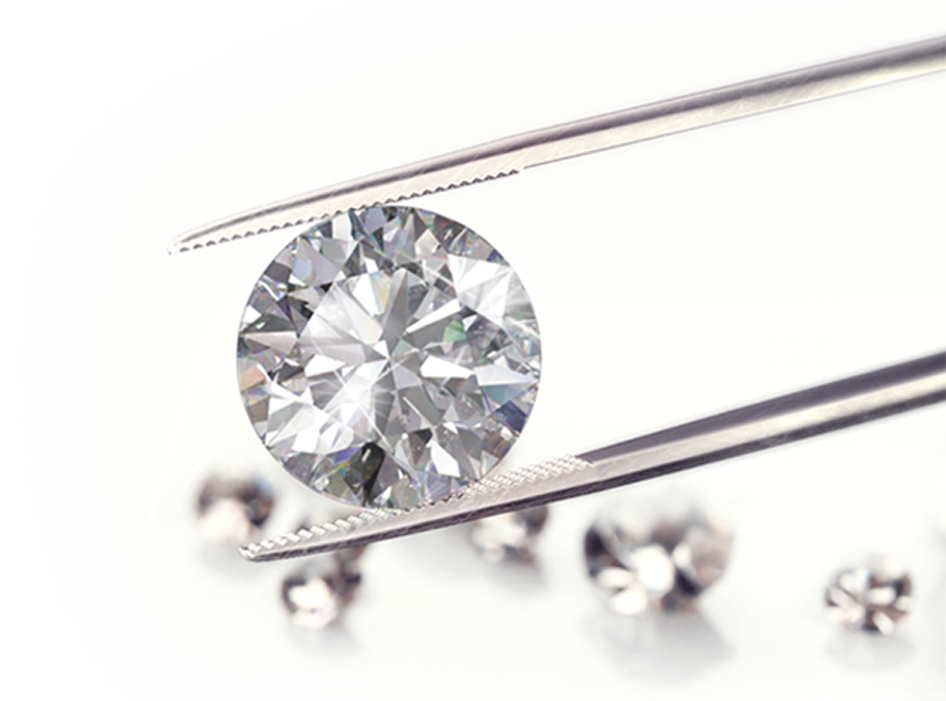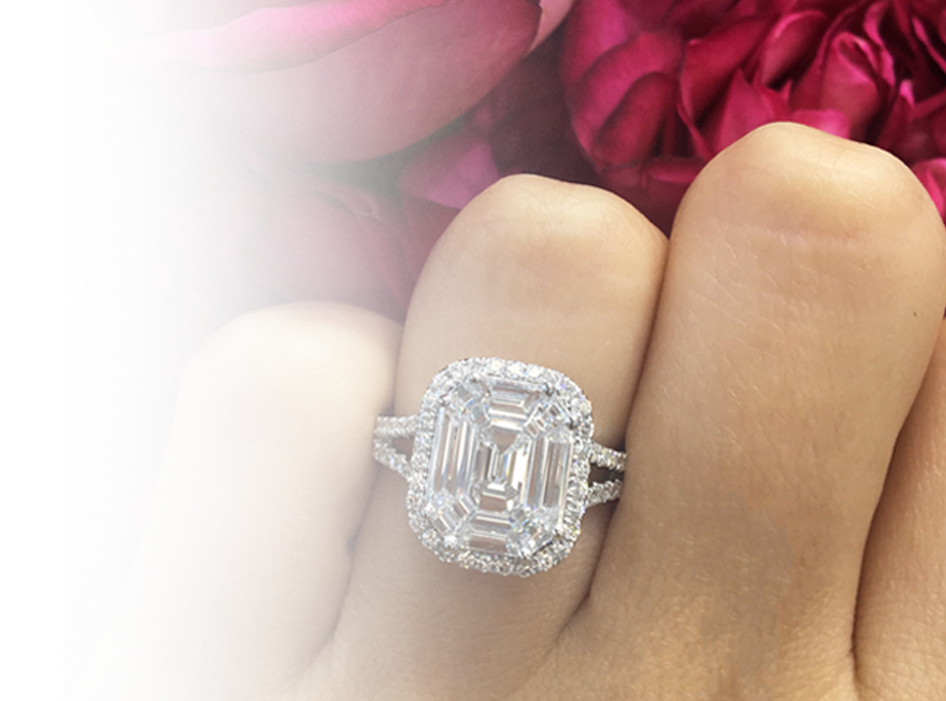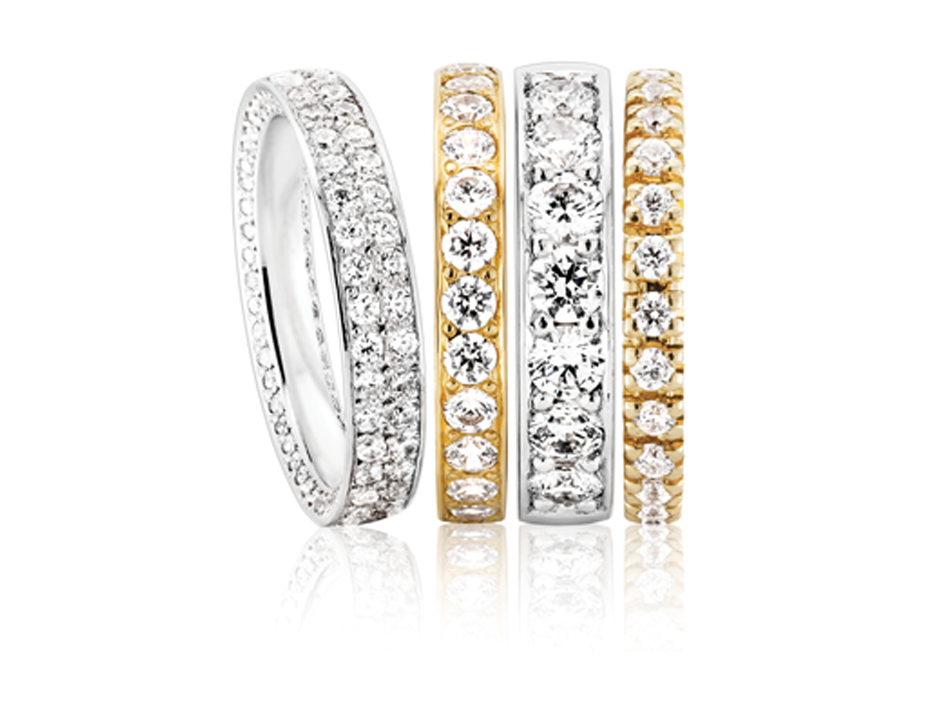Diamond clarity refers to its visual appearance - and is one of the most important characteristics of any diamond. The highest clarity diamonds are the ones with the fewest inclusions and blemishes. Diamond clarity can significantly affect the value of a diamond.
Due to the diamonds’ complex natural formation process, it is extremely rare for them to turn out absolutely perfect - so most diamonds include numerous inclusions and blemishes that usually cannot be recognised with the naked eye.
How Is Diamond Clarity Evaluated?
A diamond’s clarity is determined as a result of its examination with the naked eye and under the jeweller’s loupe (at 10x magnification). However, to identify all the inclusions that may be present, stronger magnification than 10x is also usually needed.
Size, number, location, nature, and the relief of the inclusions all play important roles in how the clarity grades are assigned. Bigger and more numerous inclusions usually result in a lower diamond clarity grade. The location of inclusions affects their visibility - so, any inclusion located closer to the centre of the table will affect a diamond’s clarity more than inclusions situated closer to the girdle. The nature of an inclusion refers primarily to its depth; a surface blemish will not affect a diamond’s clarity as much as a deeper, more pronounced inclusion. Lastly, the relief of an inclusion refers to how noticeable it is. High relief inclusions appear darker, which can negatively affect diamond grading.
GIA’s Diamond Clarity Grading Scale
GIA uses the following Diamond Clarity grading scale:
| Diamond Clarity Grade | Description |
| IF - Internally Flawless |
Diamonds with no imperfections (extremely rare). |
| VVS1 - Very Very Slightly Included (1st Degree) |
Diamonds with inclusions so slight that they are not visible under 10x magnification (a standard jeweller’s loupe). |
| VVS2 - Very Very Slightly Included (2nd Degree) |
Diamonds with inclusions that are barely visible - and very difficult to find - under 10x magnification. |
| VS1 - Very Slightly Included (1st Degree) |
Inclusions are just barely visible under 10x magnification - and can take quite a few seconds to locate. |
| VS2 - Very Slightly Included (2nd Degree) |
Diamonds with inclusions large enough to be quickly detected at 10x magnification - although some of the inclusions might be placed in a difficult to spot location. |
| SI1 - Slightly Included (1st Degree) |
Inclusions are quite easily found when examining the diamond with a standard jeweler’s loupe at 10x magnification. However, such clarity inclusions almost always appear clean to the naked eye. |
| SI2 - Slightly Included (2nd Degree) |
Inclusions are seen quite clearly at 10x magnification - and can even be visible to the naked eye with certain cuts. |
| I1 - Included (1st Degree) |
Inclusions are seen more clearly - even on brilliant cuts and when viewed with the naked eye. |
| I2, I3 - Included (2nd and 3rd Degrees) |
Inclusions are easily detected and clearly seen with the naked eye. |
How Important Is Diamond Clarity?
While Diamond Clarity is one of the most important characteristics of a diamond, buyers can sometimes be tempted to overpay for a diamond with a clarity grade that is too high to appreciate.
In reality, most VS1 / VS2 grade diamonds will look as good as an FL diamond when examined with the naked eye - but are considerably less expensive. The money you save can then be spent on a quality cut that has much more impact on a diamond’s overall beauty.
Also, when selecting your diamonds, always remember that the clarity grade you need ultimately depends on the shape of your diamond.
For example, for Round Cut diamonds under 1 Carat, the optimal clarity grades are usually VS2 or SI1. If you are after a Round Cut diamond of 1 carat or over, then you will need to go for VS1 or VS2. Overall, the larger the size of your diamond, the easier it is to see any inclusions or blemishes it has.
Step cut diamonds - such as Baguettes, Emerald Cuts, and Asscher Cuts - tend to show any imperfections more easily. So, VS2 is likely to work well with these shapes.
For Heart Shaped diamonds, you can opt for either VS2 or SI1 clarity grade as this shape hides inclusions better than Round Cuts.
Such shapes as Princess Cut, Oval Cut, and some others are more forgiving and can hide inclusions better, making SI1 and even SI2 clarity diamonds good options for these cuts.
Last but not least - when selecting a diamond, don’t just focus on its certificate and clarity plot but always take time to closely examine the diamond to see if you can notice any inclusions or blemishes. Ultimately, your main goal is to find a diamond that is eye clean, won’t break the bank - and has the perfect 4Cs ( Cut, Colour, Clarity, Carat Weight) combination for your dream jewellery piece.




































